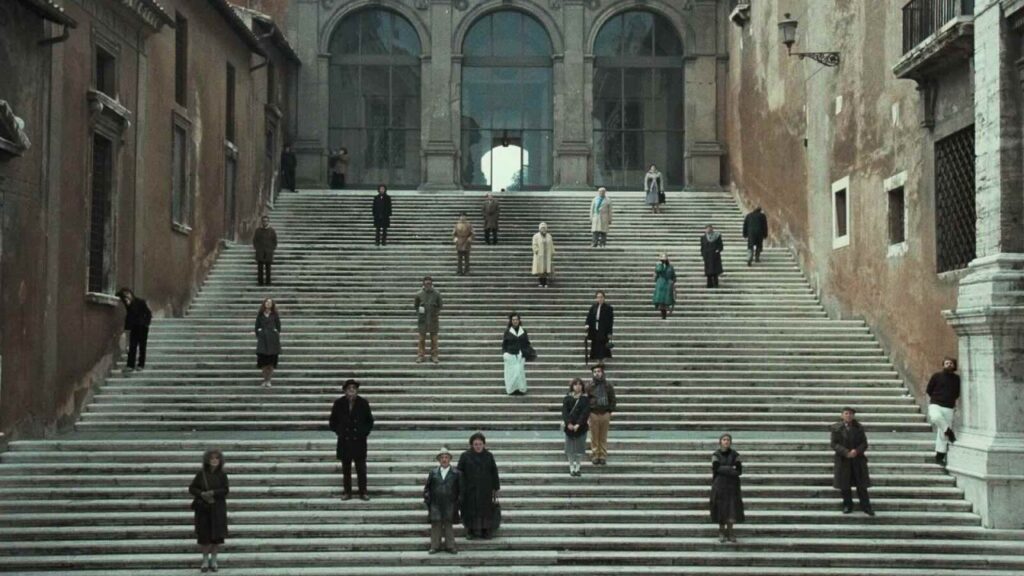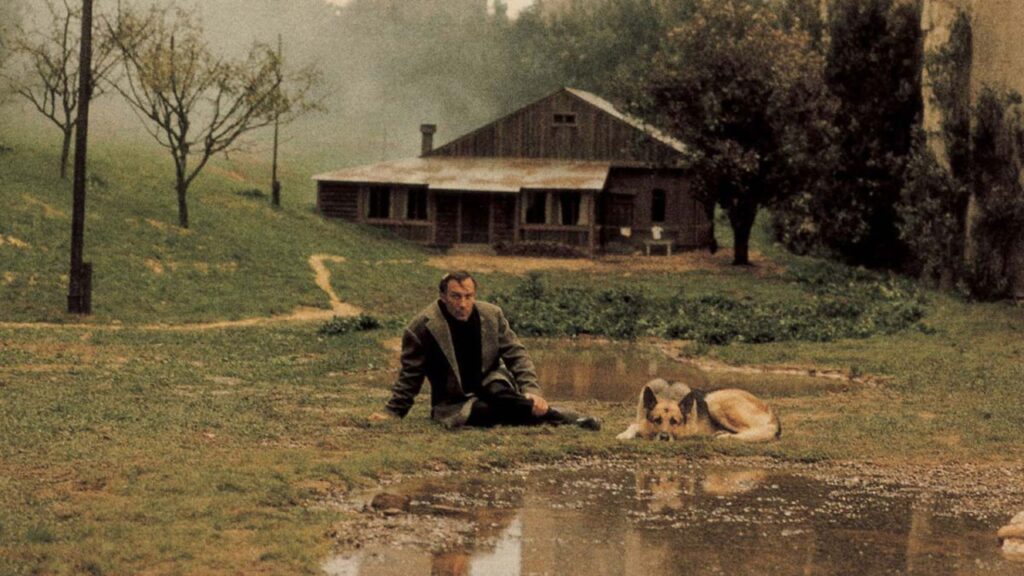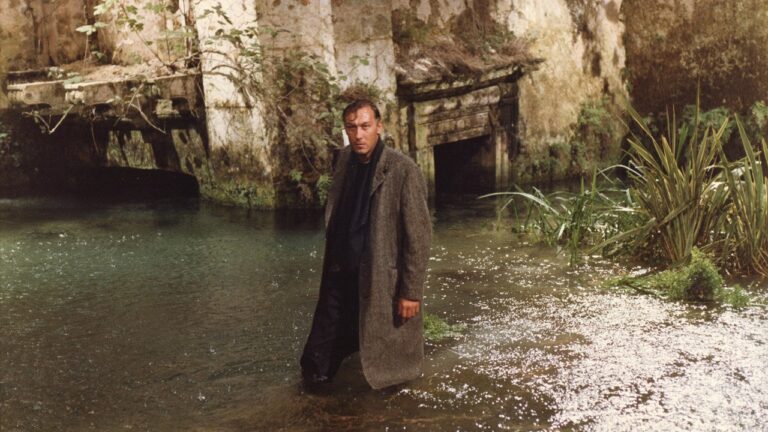Andrei Tarkovsky’s ‘Nostalgia‘ (1983) is a cinematic revelation on exile, memory, and the quiet spiritual yearning that accompanies dislocation. Shot during Tarkovsky’s self-imposed exile from the Soviet Union, the film follows Russian writer Andrei Gorchakov as he journeys through Italy to study the life of 18th-century composer Palestrina. While the narrative itself is restrained and minimal, the film’s power lies in its imagery, rhythm, and the careful cultivation of atmosphere.
From the outset, Tarkovsky establishes a world that is both tangible and ethereal. Gorchakov walks through cobbled streets, churches, and abandoned ruins, each frame meticulously composed to capture the weight of time and history. The landscapes and architecture are not mere backdrops; they are active participants in the story, reflecting the character’s inner life and the emotional texture of memory. Through these sequences, Tarkovsky examines the experience of exile—not just as physical displacement, but as an existential condition, a persistent longing for a home that exists more in memory than in reality.
The Madman’s Penance and Andrei Tarkovsky’s Cinematic Language

The encounter between Gorchakov and the eccentric madman is central to the film’s exploration of spirituality and human endurance. The madman believes he must perform an extreme act of penance, carrying water in a wheelbarrow across a ruined landscape to atone for the sins of humanity. Tarkovsky treats this act with careful reverence, presenting it as a visual allegory for faith, sacrifice, and the human capacity for moral responsibility. The sequence is rendered in long, uninterrupted takes, emphasizing the rhythm of the act itself and inviting viewers to reflect on its symbolic weight rather than seeing it as mere narrative spectacle.
Tarkovsky’s use of water, reflections, and decay runs throughout the film. Rain drips through ceilings, fountains spill, and pools of standing water mirror the sky, creating a visual language of impermanence and introspection. Every image is composed to linger, allowing the audience to inhabit the space fully and engage with the emotional and philosophical undercurrents of the scene. These long takes are not slow for the sake of pacing; they function as an invitation to dwell in the sensory experience of the moment, to feel time stretching, and to recognize the human vulnerability in the midst of history and landscape.
Sound design in Nostalgia is equally deliberate. The ambient noises of footsteps on stone, water dripping, wind moving through ruins, dominate over dialogue, reinforcing the meditative quality of the film. Conversations, when they occur, are often sparse and understated, emphasizing the solitude of Gorchakov’s experience. Silence becomes as expressive as speech, allowing the audience to enter a space of contemplation alongside the protagonist.
The Elasticity of Time and the Resonance of Memory in Nostalgia

The film’s structure is impressionistic, moving fluidly between reality, memory, and dreamlike sequences. Gorchakov’s reflections on his homeland, his letters, and his interactions with Italians blend with imagery that evokes both the physical and emotional landscapes of his past. Tarkovsky’s editing creates a tapestry of moments, each chosen for its capacity to evoke longing, memory, and spiritual reflection. Time in Nostalgia is elastic, echoing the way memory compresses and stretches, how the past persists in the present, and how longing can simultaneously anchor and unsettle the human spirit.
Ultimately, Nostalgia is a film of emotional and spiritual resonance rather than conventional plot resolution. Gorchakov’s journey through Italy, his observation of art, and his encounter with the madman converge in a meditation on human existence, memory, and the enduring pull of home. The film concludes not with clarity or closure, but with a lingering sense of introspection, inviting viewers to dwell on the interplay of beauty, time, and human longing.
In Nostalgia, Tarkovsky demonstrates cinema’s capacity to reflect the human condition through imagery and sound, crafting a work that is profoundly visual, deeply contemplative, and intimately humane. Every shot, every detail, from the shimmer of water to the worn stone of ancient ruins, conveys a sense of life’s fragility and the enduring power of memory. The beauty of the film is not only in its images but in the way it allows the viewer to inhabit the quiet spaces between action, reflection, and feeling. It is a work that lingers long after viewing, a testament to Tarkovsky’s meticulous artistry and his ability to translate the intangible experience of longing into cinema.




